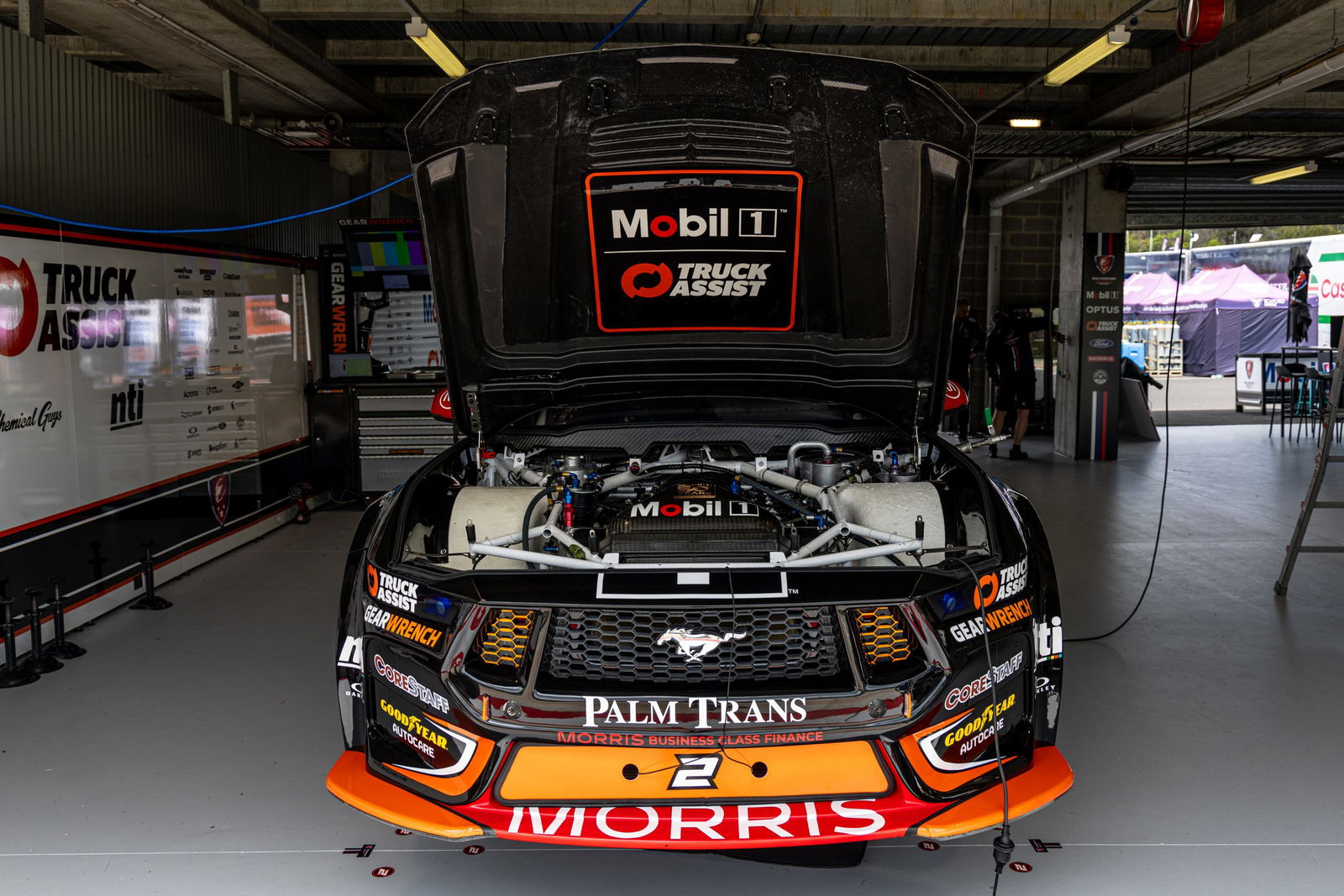

The category undertook engine testing on a transient dyno at AVL in the United States at an estimated cost of over $1 million prior to the Sandown 500.
However, there were no changes for Sandown as Supercars worked through the results of the test and subsequent running of engines on the category’s water brake dyno in Brisbane.
Supercars general manager of motorsport, Tim Edwards, told Speedcafe on Wednesday morning at Mount Panorama that the changes are close to being locked in.
“There will be small map changes to both engines this weekend,” Edwards confirmed.
“We really are just at the point of fine tuning; taking out the peaks and troughs is probably the best way to describe it.
“We know they’ve got the same output, it’s just been a process of working through where the peaks and troughs are and getting everybody to agree they’re happy that the peaks and troughs are close.”
The AVL testing is understood to have revealed the Ford had more top-end power, but also a dip in its torque curve at around 5,000rpm relative to the Chevrolet.
Supercars engine parity process is centred on a system dubbed Accumulated Engine Power, which adds power output readings at 50rpm increments within a working range to create a total.
That meant engines could have different characteristics throughout their rev range while still reading the same overall number.
“The way the AEP works, we’ve never really cared up until the point of going to AVL whether you’re up here and down there, you just add all the numbers up and provided it meets a number that’s within a tolerance band [it’s OK],” continued Edwards.
“But the goal of going to AVL was to try and make them more equal all the way through the torque curve so we don’t have the peaks and troughs, so they are similar.
“It wasn’t like we were going there and saying, ‘that one’s got 50 horsepower more than the other one’, that was never the case.
“What we’re trying to do is just smooth the profile of them so that they’re similar all the way through the torque range.”
Latest Supercars news
👉 Supercars’ message to Finals system cynics
👉 Supercars announces Finals Series for 2025
👉 Supercars reveals 2025 race formats
Edwards firmly rejected any suggestion that the Ford engine had recorded a figure over the AEP cap at the AVL dyno following a series of upgrades in 2024.
“Absolutely not. Categorically, no engine reads over the AEP, absolutely not,” he said.
“We are considering the tolerance band that we are in at the moment, but no engine has operated outside of the AEP. Categorically.”
The current tolerance window for individual engines is understood to be 0.8 percent, with suggestions that could be closed to around 0.2-0.3 percent in future.
Edwards also elaborated on the process of testing a range of engines on Craig Hasted’s dyno in Brisbane – and undertaking brief track running – before making changes.
“That was always part of our plan coming back,” he said.
“We were going to set down those engines [that were tested at AVL], we knew where they were when they left, we knew the results when they got over there and we needed to set them down, because as engines degrade, they do change output.
“We needed to track that and understand and also do some correlation from our own point of view. ‘OK, this is what AVL told us, how does that now overlay, now that you understand how AVL works and the output of it?’.
“That happened a couple of weeks ago and then obviously we were fortunate that we had that many engines that were coming back from Sandown that we were actually able to grab a great snapshot of effectively every engine that was in the top 10 at Sandown.
“That also gave us another great data set to actually go ‘right oh, what are we working with here?’.”
The Ford crankshaft issues experienced at Sandown, and subsequent need for Supercars to re-test and seal a horde of rebuilt Coyote motors, threw a spanner in the works.
“If I’m honest we’ve been hugely distracted with the volume of engines that have been going through that actually slowed up us processing a lot of that information from AVL with the volume of engines that we’ve had to deal with from both sides,” Edwards added.
“Over the last couple of weeks almost 40 engines have been through and it’s three per day on average that you achieve, so that’s been a huge distraction for us that’s less than ideal.
“Anyway, we’ve been dealing with it, Craig’s done an amazing job over the last couple of weeks to get through all that.
“So we’re crossing the t’s and dotting the i’s with the final (changes) for this weekend.”




















Discussion about this post